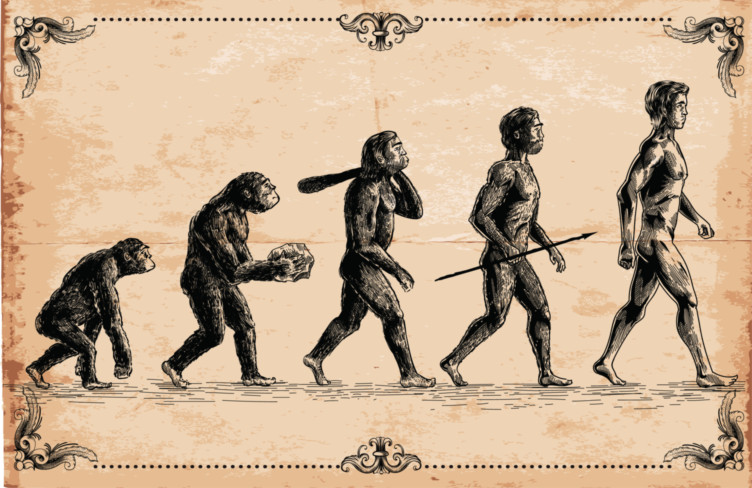Bulletproof Bullet Points: September’s Biohacking News

We’re wrapping up another stellar month here at Bulletproof. America’s northern neighbors can rejoice: we just launched Bulletproof’s Canadian online store! If you live in Canada it just got a whole lot easier (and faster!) to order Bulletproof products. Pretty great, eh?
There’s a lot going on elsewhere in the world too. This month’s biohacking news includes tasty autumnal recipes, groundbreaking scientific discoveries, and new research about the connection between your gut and your brain. Enjoy!
Invisibility cloaks are coming
Yes, like the one everybody’s favorite boy wizard owns. Researchers at UC Berkeley have created a super-thin cloak that can cover a 3D object and make it disappear. How? The cloak alters the light reflecting off the covered object, leaving it undetectable to the human eye. The researchers created a tiny version – only a few microns wide – and used it to make a microscopic set of hills appear flat. They end their paper saying they believe the technology should have no problem hiding larger objects, and that the next step is to build a much bigger cloak.
Upgrade your autumn with a Bulletproof pumpkin spice latte
As the leaves turn and we roll into fall, Team Bulletproof would like to remind you to brace yourself for the blitzkrieg of pumpkin-flavored goods coming your way. It can be excessive, but it’s also a chance to chow down on one of the most Bulletproof starches you can eat. Pumpkin is very low in fructose and it’s packed with carotenoids, antioxidants, potassium, and vitamins A and C.
Pumpkin goes with just about everything, sweet and savory alike. You can even add it to your coffee. Bulletproof ambassador and blogging badass Nick Kowalski came up with a recipe for a delicious Bulletproof-style pumpkin spice latte, just in time for the changing seasons. He also makes a mean-looking pumpkin ice cream. If you like what you see, check out the rest of Nick’s blog too. The man can cook.
One new kidney, please
That little red organ donor heart on your driver’s license may be obsolete soon. A team of Japanese researchers used rat stem cells to grow kidneys and urinary tracts, which they then put into the animals. Everything worked, so they did it a second time with pigs, and that worked too. No word on human trials yet, but we’ll keep our eyes open. And if they get tired we’ll grow new ones.
Nanosugar?
Israeli startup DouxMatok has found a new way to cut down on your sugar intake without sacrificing flavor. The company’s researchers have discovered that they can cut sugar content by 25% to 55% depending on the food, and that they can do so without changing the taste or using artificial sweeteners.
Their secret: they take nanoparticles of food-grade sand and coat them in sucrose or glucose. The particles taste as sweet as a full serving of sugar but actually contain a fraction of the normal amount. Eating excess sugar can lead to heart disease, diabetes, obesity, hormonal imbalance, and all kinds of other issues, and while processed sugar consumption is on a downward trend in the U.S., in 2008 the average American still ate almost 80 grams daily. Technology like DouxMatok’s could help curb the obesity epidemic on a grand scale.
Of course, if you follow the Bulletproof Diet you probably don’t eat much sugar, but if you do eat a little glucose or sucrose now and then, this could bring your intake down to almost zero.
Say hello to Homo naledi
Perhaps the biggest discovery this month happened in South Africa, where anthropologists found the bones of what they think is a new human ancestor. The scientists discovered a large scattering of bones in a South African cave, and while they haven’t yet decided where or how they fit into our ancestry, they note that the bones show an intriguing mix of human and ape characteristics and suggest that the discovery reveals a never-before-seen ancestor of Homo sapiens.
The researchers’ theory has its critics, many of whom say that these discoveries are based on sensationalism more than they are good science. Regardless of whether the bones belonged to a new human ancestor or a new kind of ape, the discovery is huge.
The possible link between bacteria and schizophrenia
Now there’s more. A recent study looked at the throat biomes of healthy individuals and those with schizophrenia. It found that schizophrenic people have an unusually high number of lactic acid bacteria and less biome diversity overall.
Without more research it’s hard to say whether the unusual throat biomes are a cause of schizophrenia or a result of it. A lot of schizophrenics smoke, for example, and the study may not have controlled for smoking well enough. The researchers hope to examine other bacteria next, including those in the gut biomes of schizophrenics. It’s too early to draw conclusions, but a lot of recent research suggests that your brain and your bacteria have a strong relationship.
That’s all for this month. Have you come across any noteworthy science, recipes, or miscellaneous articles? We’d love to see them in the comments!



